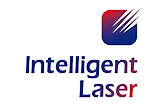In recent years, with the continuous improvement of technology, aluminum alloy fuel tanks have become the standard equipment for major specialized vehicle manufacturers due to their corrosion resistance, lightweight, safety, and high recycling value, with huge market prospects.
Robotic welding also has pain points
Welding is an important processing technology for aluminum alloy fuel tanks, and the parts involved in welding mainly include the double-ring seam of the head, the internal partition ring seam of the fuel tank, and the oil injection nozzle ring seam. Currently, the automatic welding rate of the internal partition of the fuel tank is relatively low, and most factories rely on manual welding, which has low efficiency and welding quality, and cannot meet market demands.
![]()
With the rapid development of automation technology, welding robots are becoming increasingly popular in the aluminum alloy fuel tank industry, but the overall level of flexibility and intelligence still needs to be improved. The main reasons are:
Lack of welding trajectory adaptation
Robots mostly use the "teach and playback" working mode. Due to problems such as material accuracy, alignment accuracy, and placement accuracy, industrial robots cannot autonomously recognize the deviation between the weld and the teaching trajectory, resulting in low welding qualification rate.
Lack of welding parameter adaptation
During the welding process, robots cannot recognize the characteristics of the weld to adjust the optimal welding parameters, affecting the welding quality.
Intelligentlaser enhances "intelligence" for robots
By equipping industrial robots with Intelligentlaser vision seam tracking systems, the welding qualification rate can be greatly improved. The advantages are mainly reflected in:
![]()
Guiding the robot to autonomously correct its trajectory
For similar workpieces, only one teaching session is required, and the seam tracking system can automatically guide the robot to adjust the welding gun direction and welding position in real time during subsequent welding, improving welding accuracy and ensuring qualification rate.
Adaptive adjustment of welding parameters
During the welding process, the seam tracking system can also adjust the welding parameters in real time based on the characteristics of the weld, ensuring welding quality.
Currently, the laser vision seam tracking system independently developed and produced by Intelligentlaser has been applied in the aluminum alloy fuel tank industry, which is of great significance in improving welding quality, intelligentizing welding equipment, and liberating labor. Below, Intelligentlaser will share this case study with you:
Welding of aluminum alloy fuel tank partitions
● Welding process: MAG welding
● Weld seam type: lap joint
● Product model: IL-SPD series
● Supporting equipment: KUKA robot
Case analysis
● Customer pain points:
The workpieces are relatively large, and there are errors in the accuracy of the workpiece and the card loading accuracy, resulting in a certain degree of thermal deformation during the welding process, causing a large amount of teaching for the robot and unstable welding quality.
● Implementation plan:
Equip the on-site welding robot with Intelligentlaser laser vision seam tracking system, apply the laser tracking function to identify the real position information of the workpiece, and guide the robot to weld accurately to improve welding quality.
● Application effect:
Significantly reduce the workload of operators, effectively improve welding efficiency, and greatly improve welding qualification rate.
